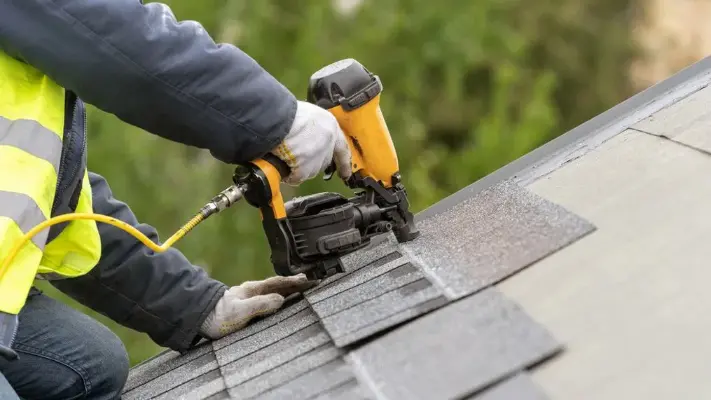The roof is integral to our home, protecting us from harsh weather conditions and contributing significantly to our abode’s overall aesthetic. However, like any other part of your home, it is not immune to damage. Spotting early signs of roof damage can save you from costly repairs in the future and ensure your home remains safe and comfortable. This guide aims to help you identify these potential issues before they evolve into major problems.
1. Contact a Local Roofer if You Spot Any Damage
Your home’s roof is an essential component that often goes unnoticed until it’s too late. There are a variety of factors that can cause damage, like severe weather, debris, or just simple wear and tear. To avoid costly repairs and extensive damage, staying proactive and addressing any issues early on is critical. The best way to do this is by contacting a local roofer for any roof repair work to ensure the problem is fixed correctly. Waiting until it’s too late could result in major leaks, water damage, and other issues that require far more expensive and time-consuming repairs. Don’t let a small problem turn into a big headache; get in touch with a trusted roofer today and protect your home.
2. Understand the Warning Signs of Roof Damage

Your roof is your first line of defense against the elements, so keeping it in top condition is crucial. One indication that your roof may be damaged is shingle discoloration. This can be caused by algae growth, which can weaken and break down the shingles over time. Another warning sign is missing shingles, which can leave your roof vulnerable to leaks and further damage.
Additionally, if you notice granules from your shingles accumulating in your gutters or on the ground, this can be a sign that your roof is reaching the end of its lifespan. By understanding these warning signs of roof damage, you can take action to address any issues before they turn into a costly and time-consuming repair.
3. Pay Attention to Your Energy Bills
An unexpected rise in energy bills could be a sign of roof damage. A deteriorated roof may fail to insulate your home properly, resulting in heat loss during colder months and air conditioning inefficiency in warmer seasons. This puts additional strain on your heating or cooling systems as they strive to maintain a comfortable indoor temperature.
As a result, you may notice an unanticipated surge in your energy consumption and, in turn, your utility bills. Monitoring your energy bills for abrupt changes can help you identify potential roof issues early on. Addressing these issues promptly can restore your roof’s efficiency and potentially reduce your energy costs in the long run.
4. Monitor your Roof for Wear and Tear
Your roof protects your home and ensures your family’s safety and comfort. However, it’s vulnerable to the elements, enduring rain, wind, heat, and cold. Regular inspections are crucial to detect wear and tear early on, preventing more serious issues like leaks, water damage, or structural problems.
Look for any cracks, splits, or tears in the shingles and any sagging or soft spots that could indicate underlying damage. By taking a few minutes to climb onto your roof and take a closer look at shingles, flashing, and other critical components, you can ensure that your roof stays in top condition and provides you with the protection you need for many years.
5. Take Preventative Measures to Protect Your Roof

While addressing any existing damage on your roof is important, taking preventative measures can help prolong its lifespan and reduce the risk of future damage. One simple step you can take is ensuring that your gutters are clean and free from debris. Clogged gutters can prevent water from draining properly, leading to leaks and water damage on your roof.
Trimming overhanging trees can prevent branches from falling and damaging your roof in storms. Schedule regular maintenance and inspections with a qualified roofer to detect and address issues early. These preventative measures allow you to keep your roof in top condition and avoid costly repairs.
6. Keep an Eye Out for Signs of Water Damage
Water damage is one of the most common and costly issues homeowners face, and it can often be traced back to a damaged roof. To catch water damage early on, watch for any signs of discoloration or stains on your ceiling or walls. These could indicate a leak in your roof that needs immediate attention.
Also, check your attic for any water damage or mold growth signs. If you notice a musty smell or see any dark spots on the ceiling, this could be a sign that your roof is leaking. Addressing these issues early on can prevent further damage and ensure your home stays dry and comfortable.
Conclusion
Your roof is vital for the safety and comfort of your family. To maintain its condition, be aware of warning signs, monitor for wear and tear, take preventative measures, and address issues early on. Don’t wait until it’s too late; act now to spot and address early signs of roof damage.
